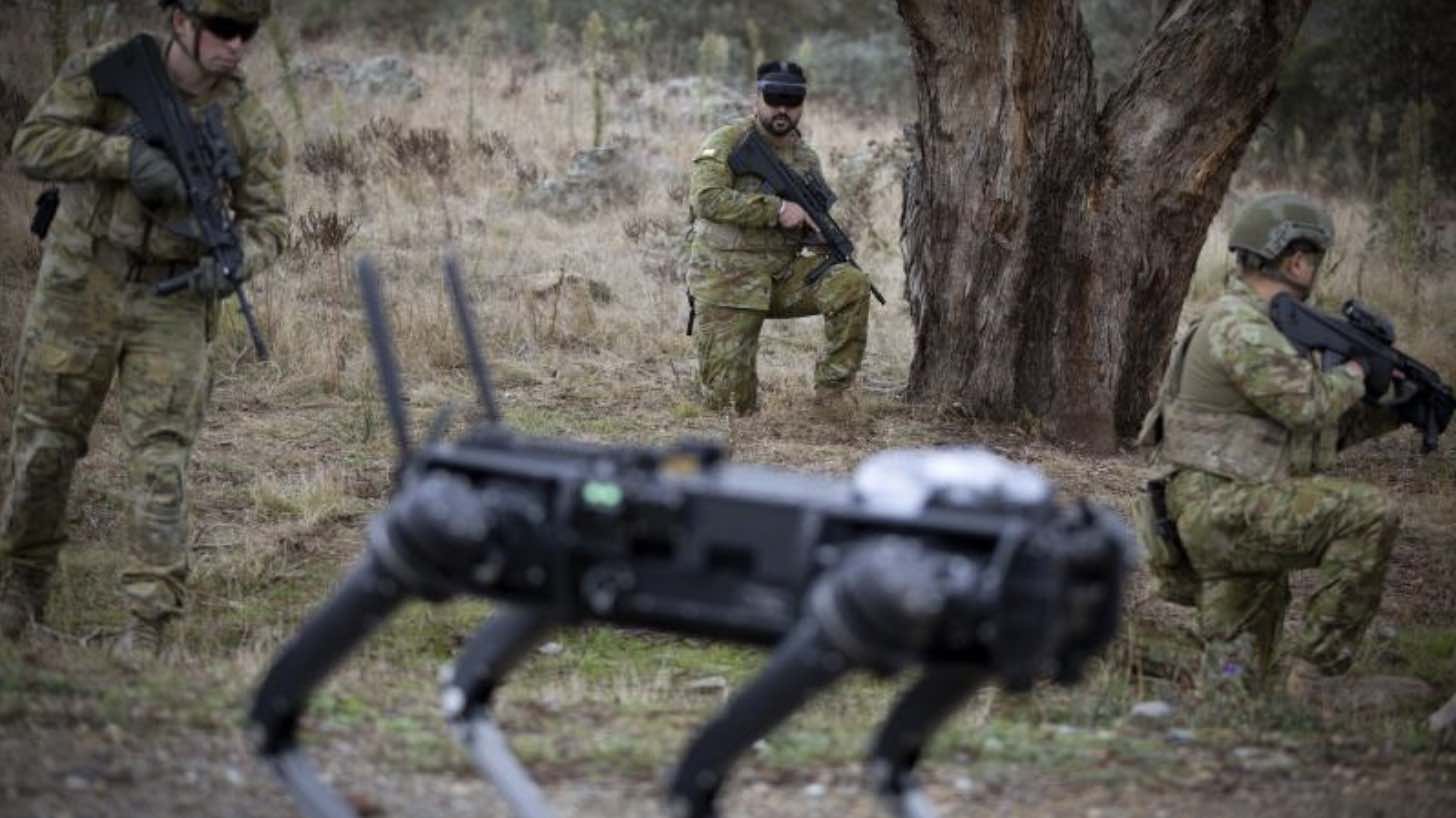A new video released by the Australian Army shows soldiers using a form of enhanced digital ‘telepathy’ to control robot dogs.
Unlike more well-known brain-machine interface technologies like Elon Musk’s Neuralink, the new system doesn’t use an implant. Instead, the system reads brain signals via an external helmet and then translates that information into commands for the robot dogs. Although still in the testing stages, robotic systems that can be controlled by thoughts instead of verbal or physical commands could offer a significant technological advantage to militaries of the future
Enhanced Electronic “telepathy’ a Potential Battle Field Game Changer
“This collaboration focused on how we could create a brain robotic interface that will allow a soldier, rather than operating an autonomous system with a command console, to operate the system using brain signals,” explained Lieutenant Colonel Kate Tollenaar from the Robotic and Autonomous Systems Implementation and Coordination Office (RICO) of the Australian Army.
Part of the Future Land Warfare Branch, RICO, was supported in this effort by researchers from the University of Technology, Sydney, the Defence Innovation Hub, and the Defence Science and Technology Group.


Specifically, the technology involves a hybrid system built using an off-the-shelf HoloLens 2 headset and a specialized Raspberry Pi-based AI decoder. The custom-built and programmed AI decoder captures brain waves and translates those signals into useful commands that were sent via ‘telepathy’ to the autonomous robot dog.
“The potential of the project is very broad,” said Sergeant Damien Robinson of the Army’s Combat Service Support Battalion, “At its core, it’s translating brain waves into zeros and ones, and that can be implemented to a number of different systems.”
In the video released by the Australian Army, the group testing the new brain robot interface sent commands ‘telepathically’ to a Vision 60 Ghost Robot. Those brain signals directed the ghost robot to traverse an open field toward a series of destinations that the human controller ‘selected’ by thinking about the location.
After a series of successful tests where the robot dog understood and executed the commands perfectly, the team conducted a second set of challenges. These involved human soldiers and robot dogs working in collaboration to clear a series of buildings, and once again, the capable canine robots and their human counterparts succeeded.
“This technology enables me to not only control the ghost robot as well as monitor its video feed,” explains Sergeant Chandan Rana of the 1st/15th Royal New Lancers, “but it allows me to be situationally aware of my surroundings as well as my team, to be able to control all movements of the battlefield clearance.”
The Versatility of the System Allows for control of all types of platforms via ‘Telepathy’
“What’s so exciting about this technology is it has the opportunity to be used with a number of different autonomous systems,” said Sergeant Robinson. That may include things like autonomous aerial drones, autonomous drone swarms, autonomous ground weapons systems, and maybe even an advanced tiny robot army that is already working its way toward battlefield implementation.
“This is very much an idea about what might be possible in the future,” said Lieutenant Colonel Tollenaar. “We’re really excited to see whether the technology might go and to work with our stakeholders to develop a wide range of use cases in order to better determine how we can support the military practitioner and the warfighter.”
Read Here About the Most Powerful Military Laser Ever Built
Christopher Plain is a novelist, comedian, and Head Science Writer at The Debrief. Follow and connect with him on Twitter, learn about his books at plainfiction.com, or email him directly at christopher@thedebrief.org.

